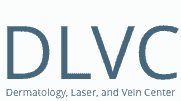Veins are blood vessels that return deoxygenated blood from the outer parts of the body back to the heart and lungs. When veins become abnormally thick, full of twists and turns, or enlarged, they are called varicose veins. Generally, the veins in the legs and thighs have a tendency to become varicose.
- The thickened, twisting or dilated parts of the vein are called varicosities.
- Varicose veins can form anywhere in the body, but they are most often located in the legs.
- In the United States alone, about 19% of men and 36% of women have varicose veins.
- Varicose veins tend to be inherited and become more prominent as the person ages.
Veins in the leg are either superficial or deep.
- The superficial veins and their branches are close to the skin. These veins typically become varicose. Also included in this category are the communicator or perforator veins, which connect the superficial veins with the deep veins.
- The deep veins are encased by muscle and connective tissue, which help to pump the blood in the veins and back to the heart. The veins have one-way valves to prevent them from developing varicosities.
- Generally, blood travels from the superficial veins to the deep veins. From there, the blood travels through a network of larger veins back to the heart.
What are the symptoms?
People with varicose veins often do not have symptoms but may be concerned about the appearance of the veins. Varicose veins are visible through the skin and appear dark blue, swollen, and twisted. If you have varicose veins, your legs may feel heavy, tired, achy, and painful. Symptoms may worsen after standing or sitting for long periods of time. Varicose veins can also cause skin color changes (stasis pigmentation), dry, thinned skin, skin inflammation, open sores (ulcerations), or bleeding after a minor injury.
Superficial thrombophlebitis (when a blood clot and inflammation develop in a small vein near the surface of the skin) can develop in varicose veins.
Varicose veins are common and are usually not a sign of a serious medical problem. However, in some cases, varicose veins can signal a blockage in the deeper veins. This condition, called deep vein thrombosis, requires evaluation and possibly treatment.
How are varicose veins diagnosed?
To diagnose varicose veins, Dr. Alaiti will examine your legs and feet. Varicose veins are easy to see, especially when you are standing. Dr. Alaiti will also check your legs for tender areas, swelling, skin color changes, ulcers, and other signs of skin breakdown.
Additional testing may also be needed if you are considering varicose vein surgery or other vein treatments.
Laser Treatment of Facial Veins
At Miracle Mile Vein Center, we treat facial veins with laser and/or intense pulsed light systems (IPL). The Diode 810 nm emits a fine beam of laser light that is used to remove superficial veins on the cheeks, chin and nose. The laser light beam targets the red color of the veins, generally with little effect on the surrounding skin. Easy recovery is typical. Some patients may experience redness after treatment, although this rarely lasts more than a few hours. Bruising is unusual. The veins, flushing and breakouts associated with rosacea can often be significantly improved with intense pulse light (IPL) treatments. This usually consists of a series of 5 treatments, done at monthly intervals. Downtime generally is a day or less of redness. Make-up can be used immediately.
Laser Treatment of Leg Veins
Sclerotherapy remains the treatment of choice for small leg veins (spider veins). By far, patients usually get better results from sclerotherapy. Sclerotherapy is also less expensive and usually less painful than laser treatment. Laser or Intense Pulse Light (IPL) treatment for spider veins is suitable for very small, or recurrent spider veins (matting). Use of concomitant sclerotherapy may enhance the results of lasers, or IPL alone. Laser therapy only treats the target vein, and does not treat the underlying feeder veins causing the problem. Spider veins on the face are much more responsive to light based treatments, including laser and intense pulsed light therapies, than leg veins.
Ultrasound Guided Endovenous Ablation
With this technique, a safe chemical sclerosant (Sodium Tetradecyl Sulphate) is injected into the affected veins, while the doctor visually monitors the vein on an ultrasound screen. This enables treatment of veins that can't be seen because they are below the surface of the skin. The solution is sometimes made into a bubbly foam (foam sclerotherapy). Treatment takes about 15-30 minutes and is done under local anesthesia. Patients will then be asked to walk for 20 minutes right after treatment, and then for at least 1 hour per day for the next week. Compression stockings need to be worn for 1 week at least. Patients should avoid hot baths for a week, but a shower if fine the day after treatment. Patients should avoid heavy lifting or straining for a week, however, normal daily activities are fine. More than one treatment may be necessary.
Ambulatory Phlebectomy
In this procedure, the doctor removes smaller varicose veins through a series of tiny skin punctures. The patient is given local anesthesia and goes home the same day. Scarring is generally minimal. Ambulatory phlebectomy is a method of removing varicose veins. It is done in the office under local anesthesia. Tiny punctures are made in the skin through which the veins are extracted. Suturing is unnecessary and usually there is no visible scar. Most procedures take about an hour. After treatment, a compression bandage is applied and a stocking is placed over the bandage. The bandage is worn for about 3 days and the stocking for about 1 week. We ask that you walk or bike about 1 hour per day for 1 week.


